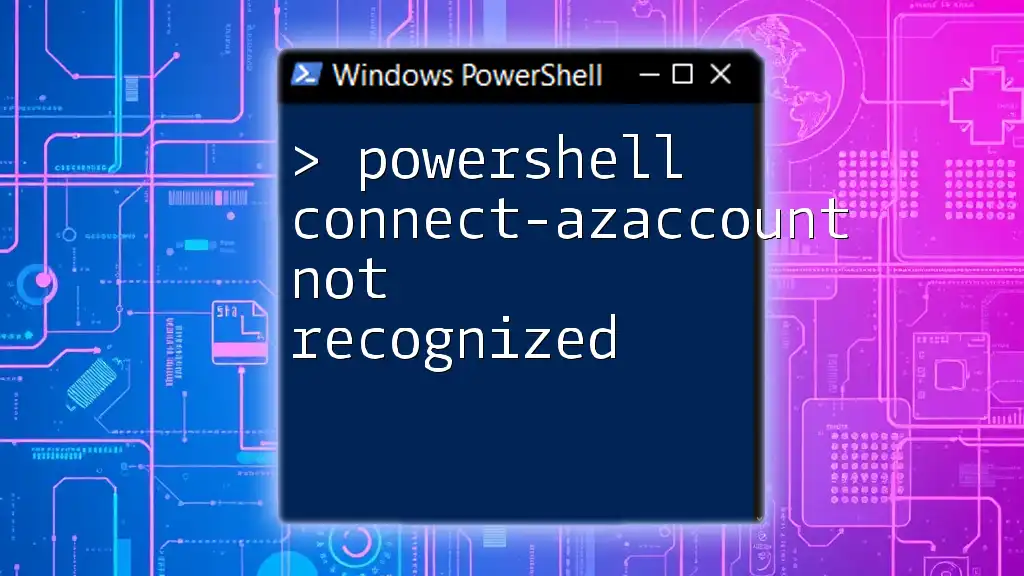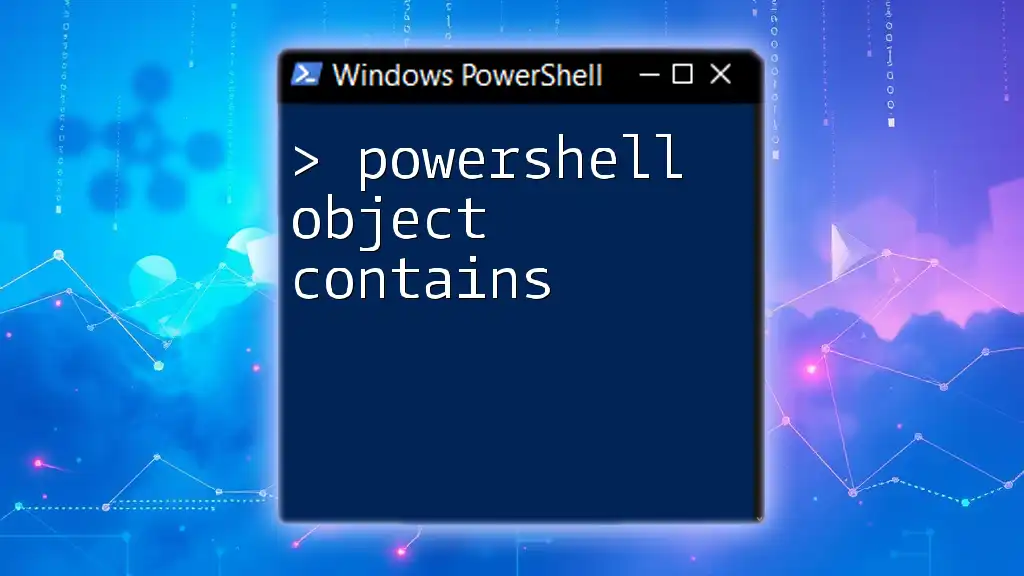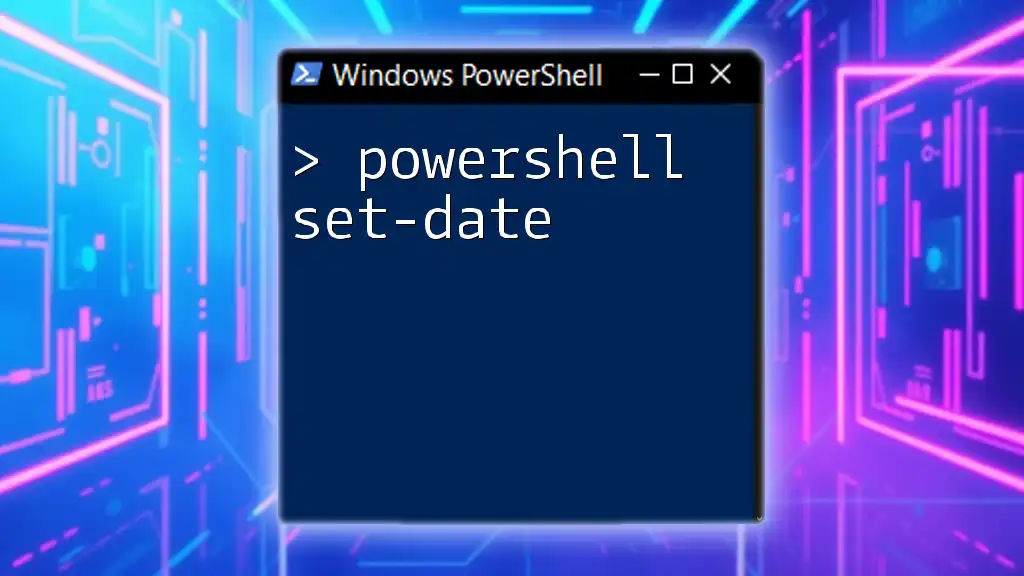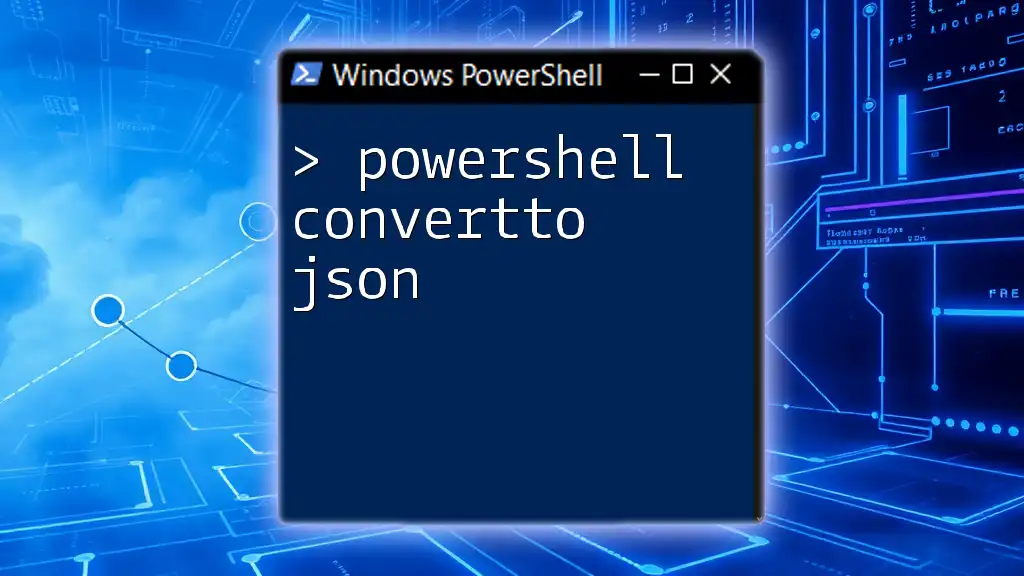The `Connect-AzAccount` command is used in PowerShell to authenticate and establish a connection to your Azure account for managing Azure resources.
Connect-AzAccount
What is Connect-AzAccount?
The `Connect-AzAccount` command is a primary function in PowerShell for authenticating users with Azure services. It simplifies the login process by establishing a connection between your local PowerShell environment and your Azure account, allowing you to manage resources effectively.
Why Use Connect-AzAccount?
Utilizing `Connect-AzAccount` is critical for several reasons:
- Authentication: It helps authenticate your Azure account, enabling you to execute Azure-specific commands in PowerShell.
- Management of Resources: Having an authenticated session allows you to create, modify, or delete Azure resources directly from PowerShell.
- Automation: This command is essential for scripting and automating workflows involving Azure resources, especially in CI/CD pipelines.

Prerequisites
Required PowerShell Modules
Before using `Connect-AzAccount`, you need to ensure that the Azure PowerShell module, known as the Az module, is installed. This module contains all the necessary cmdlets for managing Azure resources.
You can install the Az module using the following command:
Install-Module -Name Az -AllowClobber -Scope CurrentUser
Azure Subscription Requirements
To connect using `Connect-AzAccount`, you must have an active Azure subscription. This subscription provides the necessary permissions to access and manage Azure services.
Ensure you have the following information handy:
- Azure Username and Password: Required for authentication.
- Tenant Information: Knowing your Azure Active Directory tenant can be useful, especially in multi-tenant environments.

Using Connect-AzAccount
Basic Syntax and Features
The general syntax for using `Connect-AzAccount` is straightforward:
Connect-AzAccount
When you run this command, an interactive window will appear, prompting you for your Azure login credentials (username and password). This command automatically detects the relevant Azure environment (like Azure Public, Azure China, or Azure Government).
Connecting to Your Azure Account
To establish a connection to your Azure account, execute the command `Connect-AzAccount` within your PowerShell session. This will initiate a login prompt that allows you to enter your credentials.
Upon successful entry, PowerShell will confirm your login status by displaying the connected account details, including your subscription information. In this way, you gain access to Azure resources, and PowerShell is prepared for subsequent commands.

Advanced Connection Options
Using Service Principal for Automation
In scenarios where automation is paramount, using a Service Principal for authentication is recommended. A Service Principal is an account that allows applications to authenticate and access resources in Azure without human interaction. This is particularly useful in automated scripts.
To connect using a Service Principal, you must first create one and obtain its credentials. You can then use the following command:
$credential = Get-Credential
Connect-AzAccount -ServicePrincipal -Credential $credential -Tenant "<Your Tenant ID>"
This command will securely authenticate via the Service Principal without requiring a user login.
Connecting Using a Specific Tenant
If you work in a multi-tenant environment or need to authenticate against a non-default tenant, you can specify the tenant using the following:
Connect-AzAccount -Tenant "<Your Tenant ID>"
This command ensures that your session is properly connected to the desired tenant, allowing precise management of Azure resources across different environments.
Using a Subscription ID
To connect to a specific Azure subscription, utilize the `SubscriptionId` parameter. This is particularly handy if your account has multiple subscriptions. Use the following command:
Connect-AzAccount -SubscriptionId "<Your Subscription ID>"
By doing this, you specify the exact subscription you want to manage, streamlining your PowerShell operations.

Troubleshooting Common Issues
Authentication Issues
Sometimes, users may encounter authentication errors when using `Connect-AzAccount`. Common error messages like “Invalid credentials” can arise due to several factors, including:
- Typographical errors in usernames or passwords.
- Accounts that lack sufficient permissions.
To resolve these issues, double-check your credentials and confirm that your account is active and has the appropriate role assignments.
Permission Denied Errors
When attempting certain operations, you might face `Permission Denied` errors. These issues typically stem from Azure's role-based access control (RBAC) settings. To troubleshoot:
- Verify that your account has been granted the necessary Azure role, such as Contributor or Owner.
- If adjustments are required, consult with an Azure administrator to ensure the proper roles are assigned.

Best Practices for Using Connect-AzAccount
Secure Authentication
Security should always be a priority when interacting with Azure. Follow these best practices for safe authentication:
- Avoid Hardcoding Credentials: Instead of embedding sensitive information directly in scripts, use secure methods such as storing credentials in Azure Key Vault.
- Use Multi-Factor Authentication (MFA): Enabling MFA for your account adds an essential layer of security, reducing the risk of unauthorized access.
Regularly Update PowerShell Modules
Staying updated with the latest versions of PowerShell modules, including Az, ensures you benefit from the latest features and fixes. To check for updates, use the following command:
Update-Module -Name Az
This practice keeps your environment stable and your commands functioning correctly.

Conclusion
Using `Connect-AzAccount` is essential for any PowerShell user managing Azure resources. It enables secure authentication and paves the way for efficient resource management in your Azure environment. By understanding the different connection methods and best practices, users can simplify their workflows and enhance their automation efforts in Azure.

Additional Resources
For those looking to deepen their understanding of the `Connect-AzAccount` command and Azure management via PowerShell, the following resources can be invaluable:
- Microsoft Documentation: Official documentation for `Connect-AzAccount` provides detailed parameters and options.
- Community Forums and Blogs: Engaging with community discussions can offer tips and tricks from other Azure users and experts.
With this guide, you are equipped to leverage the full power of Azure through PowerShell effectively.



















